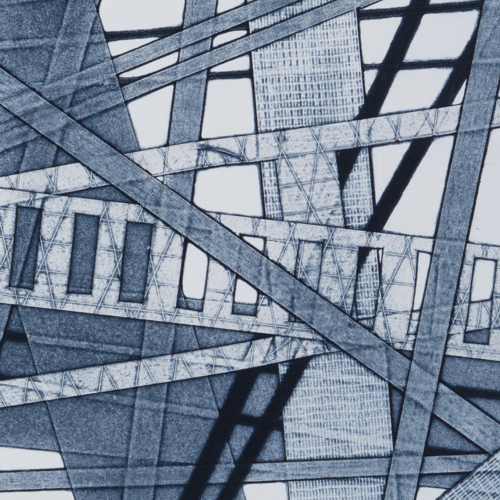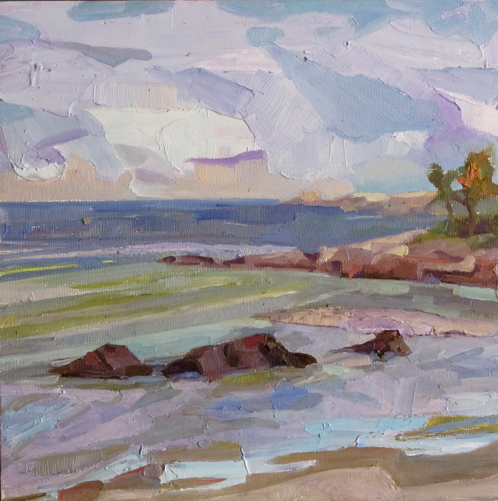10x10+4 isn't 104.
About a year ago, when I was about to move to Los Angeles, one of the drawing groups I worked for was talking a lot about "ten by ten". I had no idea what that meant at first, but managed to figure out that it was an art show that some of them were involved with in some capacity. That's all I figured out until this year, when the buzz started again. I decided to ask and was justly rewarded. 10x10 is a annual art show that has been happening more or less every year for the past two and half decades. It features ten artists displaying ten works that are all 10in by 10in, originally for $100 each (this has changed with the times).

Originally intended to include the same artists year after year, the group has changed significantly over the years, adding to depth of its history. Many of the artists in the current roster attend (or host) the drawing group where I first heard about it. Imagine my pleasure to find this year’s 10x10 (+4) show at the June Fitzpatrick Gallery at MECA, a five minute walk from my apartment.
I trudged wetly through pouring rain under Sarah’s polka dotted umbrella to make the opening night. The show was only on for two days, allowing the artists to keep prices low and inspiring visitors to brave the storm. I arrived to a gallery full of soggy people clutching plastic cups of Trader Joes wine, so it was basically like I'd never left my apartment. The gallery was small, and the work on the walls was grouped by artist, so I was able to wander around based on what caught my eye.
The greatest strength of 10x10 was the diversity, seemingly ironic in a show with set dimensions. However, the equal size of each work provided a platform for comparison that focused the attention on the surface of the work rather than that space it contained. The variation in framing was striking, prompting reflection on the importance of framing, often overshadowed by the works themselves. For example, the calm simplicity of Todd Bezold’s ocean landscapes would have been overwhelmed and underserved by a frame; their display without lent presence to the atmospheric works. The variation of artistic mindset and strategy shone in the way the paintings informed each other; every artist's work looked truly unique yet seamlessly linked to the rest of the show. The viewer was pulled around the gallery, led by details of works that shed light on others.
Michael Walek coaxed a stained quality from his gauche landscapes, which looked almost like batiking and played into the soothing folksiness of Martha Miller’s vibrant prints to the left. Pulling patterns from the borders of her work led you to the landscapes of Lindsay Hancock, simple shapes leaving brilliant colors to set the tone of the work. Her straight-lined abstractions of organic forms led you across the gallery to the stark geometry of Chris Beneman's lithographs. The dull tones, long lines and intricate overlapping looked like shadow studies of the many bridges of the area. Suddenly thoughts of metal were on the mind, mottled pipes and secondhand brooches flashing from found object relief sculptures by Roz Fedeli, perched rigid and distinct in the ample showing of paintings.
Next to the curvy metals lay a series of watercolors by Pat Hardy showing broken ceramics on white cloth, the sharp edges of the watercolor and the smooth sides of the pipes a beautiful contradiction. The intersection of sculpture and painting was completed by Russ Whitten’s incredibly tangible oil paintings, the palate-knife applied paint reaching off the canvas to catch the light in a way that made them into abstract reflection studies as well as moody landscapes.
The benefit of this diversity was in no way lost on the producers of the show. The +4 part of the show's name referenced a juried set of four young Portland-based artists. Many of them were connected to MECA, which is known for an avant-garde curriculum. Of course all artists seem to tend toward the classical when you only see them at drawing group, but it was refreshing to see the melding of established artistic thought and fresh new perspectives. I talked to a woman who had been to almost every show for 23 years, and thought how amazing it would be to see the development of the exhibition over that time. To see the new work in the show solidified the idea of a commitment to the diversity that made 10x10 such an enjoyable experience.
All images lifted from the 10x10 website. Hopefully a more timely post will introduce next year's show.

